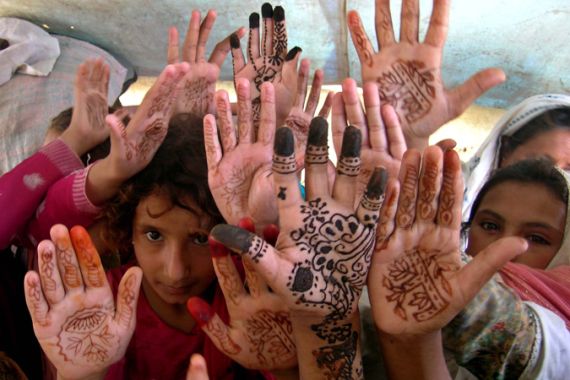Child deaths under the spotlight
Unicef shifts its resources and strategy after falling short of its goals to reach the world’s poorest children.

 |
| Unicef plans to employ some of grass-roots approaches to reducing child and infant mortality rates [GALLO/GETTY] |
Save the Children says there have been four million preventable child deaths over the past 10 years because states have failed to help the poorest.
In another report, the UN children’s agency Unicef also highlights a huge divide between children from rich and poor backgrounds. Unicef says it is shifting to a strategy of getting critical healthcare services to the poorest of the poor.
Unstable communities affected by conflict also leave children vulnerable to deprivation and abuse.
The hard-hitting reports come two weeks before a summit in New York on the Millennium Development Goals. The message of both reports is that helping a country to become wealthier does not necessarily mean more children’s lives will be saved.
Unicef’s new approach is likely to concentrate more on such initiatives as training rural health workers and building schools in remote areas, and less on building big modern hospitals and universities in cities, according to Charlie MacCormack, of the non-governmental Save the Children, which Unicef consulted.
It would cost less but also demand more planning and effort, he said.
“This is a refocus for Unicef, ensuring that equity reaches into the most deprived areas,” Anthony Lake, the agency’s new executive director, said.
Development goals
The Unicef report comes in the lead-up to a global summit to study the UN’s Millennium Development Goals – objectives it set 10 years ago to halve rates of fatal disease, illiteracy, hunger and poverty by 2015 from what they were in 1990.
It says the global mortality rate for children under five has been reduced from 90 to 65 per 1,000 live births since 1990. But it notes that mortality rates for infants and toddlers remain high in especially destitute regions such as sub-Saharan Africa, where one of seven children died before their fifth birthday in 2008.
However, the majority of child deaths are still attributed to preventable causes, such as diarrhoea and pneumonia and malaria. Neonatal deaths figure prominently in infant mortality rates.
Tracking and reducing the mortality rate of children under the age of five is crucial as the mortality rate of that age group is “a leading indicator of the level of child health and overall development in countries”, according to the World Health Organisation.
Lake said that the women health workers he watched helping devastated families last month in flood-ravaged Pakistan confirmed that community-based programmes can reach the world’s neediest better than modern urban hospitals and state-of-the-art research centres.
He said that extensive data analysis since he joined Unicef in May shows that grass-roots health, education and other development programmes inside the most vulnerable communities could improve the lives of the world’s poorest children significantly and ensure they live long enough to go to school.
Cash transfers
Along with community outreach, Unicef is also studying conditional cash transfers, which reward people for good behaviour such as visiting a doctor.
The theory is that cash rewards reduce immediate hardship for poor people while reinforcing small but significant actions they can take to improve their long-term stability.
MacCormack said that countries including China, South Korea, Taiwan, Canada and throughout Scandinavia have been especially effective in using community outreach to improve the lives of their most marginalised citizens.
“We are not going to create a level playing field for the world’s young people if we don’t make this effort,” he said.
“And for the UN, there is no way to get close to achieving the Millennium Development Goals unless we make an effort to get to the hardest to reach.”